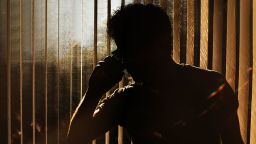The 988 Suicide and Crisis Lifeline will now be available to the millions of people across the US who use American Sign Language (ASL), according to the US Department of Health and Human Services.
How to get help
The ASL services launched Friday and will be available for callers who are deaf, deaf-blind or hard of hearing using a videophone – a device used by deaf and blind people that transmits video as well as audio. These callers can now be connected to a 988 Lifeline counselor trained in ASL by clicking on the “ASL Now” button on 988lifeline.org and following the prompts.
Direct dialing to 988 from a videophone will be available in the coming weeks, but for now, ASL users can call 1-800-273-TALK (8255) from their videophone to reach ASL services, the HHS says.
Formerly known as the National Suicide Prevention Lifeline, the 988 Suicide and Crisis Lifeline launched last year, transitioning the former 1-800-273-TALK phone number to three digits that are intended to be easier to remember, like 911 for emergency medical services.
“Individuals across America who use ASL as their primary language can now readily access the support they need during a mental health crisis,” HHS Secretary Xavier Becerra said in a statement.
“With the introduction of 988 ASL services, we are taking a significant stride forward in providing inclusive and accessible support for the Deaf and Hard of Hearing community,” he said.
“This is a testament to our ongoing commitment to ensure that no one is left behind when it comes to mental health support.”
The launch of ASL services is part of an ongoing effort by HHS’s Substance Abuse and Mental Health Services Administration (SAMHSA) to make behavioral health care more accessible for underserved groups. Earlier this year, the 988 Lifeline rolled out text and chat features for Spanish speakers.
During a news conference Friday at the University of Missouri’s Peace Park, Monica Johnson, director of the 988 & Behavioral Health Crisis Coordinating office at SAMHSA, said it was a good day to launch the service.
“We’re talking about mental health in a way that we have not historically talked about it,” Johnson said. “Having these conversations in a beautiful park on a beautiful day really sets the stage for reducing stigma when we talk about suicide, when we talk about mental health, when we talk about substance use.”
The 988 Lifeline is a network of more than 200 state and local call centers supported by HHS through SAMHSA. It is available to anyone seeking help with suicidal crises, mental health or emotional distress.
The concept for 988 was first proposed to Congress by the Federal Communications Commission in August 2019. When the National Suicide Hotline Designation Act was signed into law in 2020, 988 was authorized as the new three-digit dialing code for suicide and mental health crises.
Nearly 5 million calls, texts and online chat messages were answered through 988 in the year since its launch, according to data released in July by HHS.
Get CNN Health's weekly newsletter
Sign up here to get The Results Are In with Dr. Sanjay Gupta every Tuesday from the CNN Health team.
The Biden administration has invested nearly $1 billion into the initiative, with much of the funds going directly to states, territories and tribes to hire crisis counselors and improve local response, HHS says.
More than a year after the crisis line launched, efforts continue to help familiarize people with the service. A National Alliance on Mental Illness poll of about 2,000 adults released in July found that 82% either were unfamiliar with or had never heard of the 988 Suicide and Crisis Lifeline.
Only 17% were “very” or “somewhat” familiar with the service, the poll found. Young adults ages 18 to 29 and LGBTQ+ adults were more likely to be familiar with 988.
CNN’s Jacqueline Howard contributed to this report.

